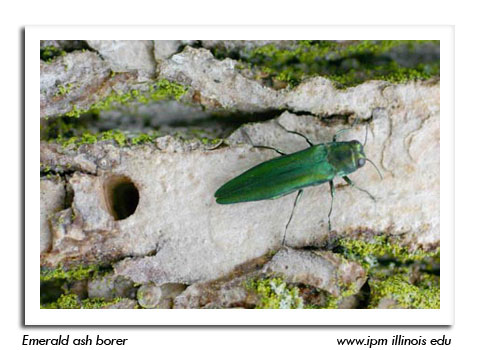
 |
|
|
Nursery & Forest
Volume 58 Number 1 Date 05/02/2013 CONIFER WINTER INJURY - After last year's drought, arborvitae, fir, pine, spruce, yew and other conifers throughout the state are showing reddening and browning of needles caused by winter burn, winter drying or a combination of the two. Symptoms of the former appear in response to rapid temperature fluctuations in late winter and early spring, while the latter develops whenever soil freezes and winter winds draw moisture from plants. Damage is generally more prevalent on southern and western exposures. Winter injury is an abiotic disorder that should not be mistaken for infectious disease. Symptoms are usually temporary and resolve by early summer. NURSERY INSPECTION - Early-season greenhouse inspections have been conducted in Brown, Chippewa, Eau Claire, Kewaunee, Pierce, Racine and Waukesha counties. The most common arthropod pests encountered were aphids, fungus gnats, shoreflies, spider mites and thrips. Diseases observed were hosta virus (HVX) on 'Blue Angel', 'Gold Standard', 'Guacamole', 'Sunshine Glory', 'Whirlwind' and 'Winter Snow' and tobacco rattle virus (TRV) on alcea, astilbe, delphinium, dicentra, epimedium, lobelia, pachysandra and phlox. Both HVX and TRV have become very common viral diseases in the nursery trade. IMPATIENS DOWNY MILDEW - This disease of impatiens has been diagnosed by the UW-Madison Plant Disease Diagnostic Clinic from samples collected earlier this spring in a Monroe County greenhouse. Last season, impatiens downy mildew (IDM) became widespread in U.S. greenhouses and landscape settings, with Wisconsin and more than 30 other states reporting cases. To reduce IDM problems this year, commercial growers of impatiens are advised to inspect and cull plants with light green stippled leaves, curled leaves, or the characteristic white, downy mycelia growth on the undersides of foliage. Home gardeners should also carefully examine impatiens for symptoms before purchasing flowers, and consider planting the mildew-resistant New Guinea impatiens or a New Guinea hybrid. BOTRYTIS BLIGHT - This gray mold disease of ornamental plants was observed on New Guinea impatiens in Brown and Kewaunee counties. Botrytis development is likely the result of growers holding plants too long due to cold weather and a late spring. Maintaining relative humidity levels below 85% and increasing air circulation to keep leaf surfaces dry should reduce its occurrence. Infected plants must be treated with a protective fungicide or removed from the greenhouse. GYPSY MOTH - Early May is an appropriate time to implement controls to reduce summer gypsy moth defoliation. Control options include removing or treating egg masses with horticultural oil or placing sticky barrier bands on trees to prevent the larvae from accessing the canopy. Horticultural oils that suffocate the eggs can be purchased at garden centers and large retailers and should be applied at temperatures above 40°F, when freezing is not imminent. Egg masses within reach may be scraped into a bucket of soapy water and soaked for 2-3 days before being discarded. Property owners considering insecticide treatments should consult an arborist or tree service in the immediate future. -- Liz Meils, DATCP Nursery Inspector EMERALD ASH BORER - Preventative treatment of ash trees should begin at this time. The optimal timing for soil injections and drench insecticides is between mid-April and mid-May to allow 4-6 weeks for the material to be translocated throughout the vascular tissues of the tree before larvae establish. Trunk-injected products should not be applied until after ash tree foliage has expanded, but prior to egg hatch. Treatment is recommended only for healthy, high-value ash trees within 15 miles of a known infestation or within a quarantined area. -- Renee Pinski, DATCP Forest Entomologist 




|
|
|